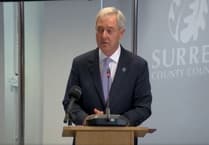LAST WEDNESDAY marked national Thank a Teacher Day. This year, more than ever, teachers and school staff deserve all our thanks.
First, for all they’ve done in keeping schools open for vulnerable children and key worker families. Second, for their fantastic adaptability in putting together remote learning, in double-quick time.
But even with these huge efforts, learning at distance is no substitute for being in class, guided by an inspirational teacher, in person.
There’s a renewed and heightened respect for the teaching profession, and sharper appreciation of the unique skill involved.
I think pretty much all parents dealing with learning at home have found it a challenge – especially when working from home yourself as well.
But for many East Hampshire families it will have been a positive experience, too.
Even so, there are some things in education you just cannot replicate remotely. And there are some families and children for whom the experience has not been at all positive.
As well as the educational effect on a whole generation of children, those from disadvantaged homes are affected most. There is a danger of a re-widening of the attainment gap, which had been brought down by around ten per cent over the past decade.
This is a factor throughout the school years, but especially in the earliest years, primary/secondary transition, and coming up to public exams.
There are also wider social and health issues.
For some in the most difficult of home circumstances, school is their safe place; schools are also a main source of referrals to children’s services when needed.
Mercifully this does not apply to the great majority of children, but even so there are health detriments to being out of school.
This is partly about physical health and exercise, but also about the effect on mental health and wellbeing, which is partly about human relationships, and partly about routines. It’s important that children are able to return to school – and that’s happening in many countries around the world.
But it has to be done gradually, carefully and in a way that is safe for teachers, other staff, and children.
That is why the return is very limited, class groups are to be so limited in size, and the guidance is for them to be kept in separate groups, without the sort of whole-school mixing you would usually have, with stringent hygiene requirements.
It is quite natural people will have concerns, but it must be stressed the very gradual, partial return plans for not earlier than June 1 remain contingent on the five tests the prime minister set out. There is also very detailed guidance on this phased approach, to maintain safety.
And I know schools have been thinking about how to work this in their own unique situations.
With a week still to go until the earliest date for the first year groups to return, I hope more families will have a chance to look at this.
There is a link to the summary of the scientific advice published by the Department for Education on the website www.damianhinds.com





Comments
This article has no comments yet. Be the first to leave a comment.